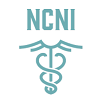Dystonia is a movement disorder that causes involuntary muscle contractions, repetitive twisting or jerking movements, abnormal postures, and spasms that resemble tremors. They’re classified into many types including, primary (idiopathic), secondary or acquired (CNS), focal, segmental, and generalised dystonia.
More than 250,000 people are diagnosed with dystonia in the USA every year, with cervical dystonia being the most prevalent type. It’s also known as spasmodic torticollis (Latin for twisted neck) and causes the head or neck muscles to bend forward, backward, twist, rotate or tilt.
Here Are Some Facts about Cervical Dystonia
- Although it can occur at any age, research shows that chances of cervical dystonia increase as a person ages. This is why it’s mostly diagnosed in middle-aged people.
- It can be present at birth due to genetic mutation, but the real cause is still unknown.
- It can occur as a symptom or side effect of various other neurological disorders such as multiple sclerosis, Parkinson’s disease,and cerebral palsy.
- Along with physical exertion, emotional and mental stress can also aggravate symptoms of dystonia.
- Focal dystonia is most common and generalized dystonia is the second most common one. While the former begins during adulthood, the latter is usually attributed to genetic susceptibility.
Diagnoses
Doctors often use brain MRI’s, electromyography, and other scans to rule out nerve irritation, spinal cord compression, or other underlying causes that may be responsible for the symptoms. There’s no definitive test that can diagnose cervical dystonia. Only a thorough clinical exam by a neurology expert such as Dr. Farzin Pedouim from Movement Help can resolve the issue. After learning the family history and symptoms of the patient, the doctor may perform genetic testing.
Treatment
To date, there’s no particular treatment that can prevent or slow the progression of dystonia. Identifying tailored regimens to treat symptoms in adherence to every individual’s requirements helps regain functionality and posture, and relieves pain, spasms, and other symptoms.
Anticholinergic and dopaminergic medicines, botulinum toxin injections, and other muscle relaxants are used along with physical therapy and biofeedback massages. Although botulinum toxin injections have a success rate of 70% in reducing muscle spasms, some patients require neurosurgical procedures.
Dr. Farzin Pedouim is a board-certified neuromuscular movement disorder specialist who also uses deep brain simulation (DBS) therapy when conventional treatments remain ineffective.
Complex treatments require patience, perseverance, and expertise that’s offered at Movement Help, a premium healthcare facility. The renowned Dr. Farzin Pedouim is not only a Parkinson’s disease Specialist in LA, but he also uses a combination of techniques to treat patients of cervical dystonia.
If you’re looking for treatment for yourself or a loved one that will help you live a perfectly normal life, reach out to us at (949) 239-4410.






